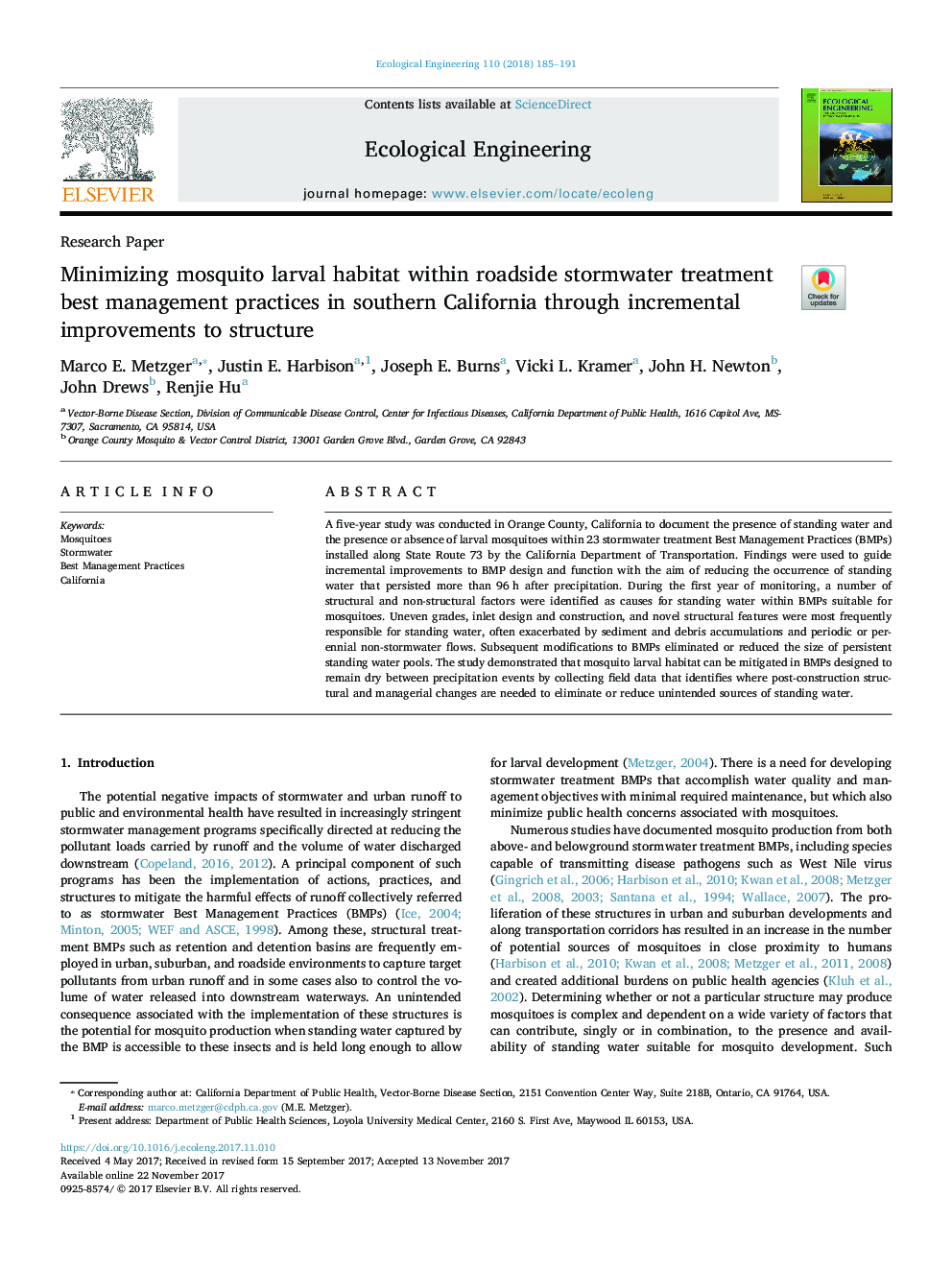| Article ID | Journal | Published Year | Pages | File Type |
|---|---|---|---|---|
| 8848147 | Ecological Engineering | 2018 | 7 Pages |
Abstract
A five-year study was conducted in Orange County, California to document the presence of standing water and the presence or absence of larval mosquitoes within 23 stormwater treatment Best Management Practices (BMPs) installed along State Route 73 by the California Department of Transportation. Findings were used to guide incremental improvements to BMP design and function with the aim of reducing the occurrence of standing water that persisted more than 96Â h after precipitation. During the first year of monitoring, a number of structural and non-structural factors were identified as causes for standing water within BMPs suitable for mosquitoes. Uneven grades, inlet design and construction, and novel structural features were most frequently responsible for standing water, often exacerbated by sediment and debris accumulations and periodic or perennial non-stormwater flows. Subsequent modifications to BMPs eliminated or reduced the size of persistent standing water pools. The study demonstrated that mosquito larval habitat can be mitigated in BMPs designed to remain dry between precipitation events by collecting field data that identifies where post-construction structural and managerial changes are needed to eliminate or reduce unintended sources of standing water.
Related Topics
Life Sciences
Agricultural and Biological Sciences
Ecology, Evolution, Behavior and Systematics
Authors
Marco E. Metzger, Justin E. Harbison, Joseph E. Burns, Vicki L. Kramer, John H. Newton, John Drews, Renjie Hu,
